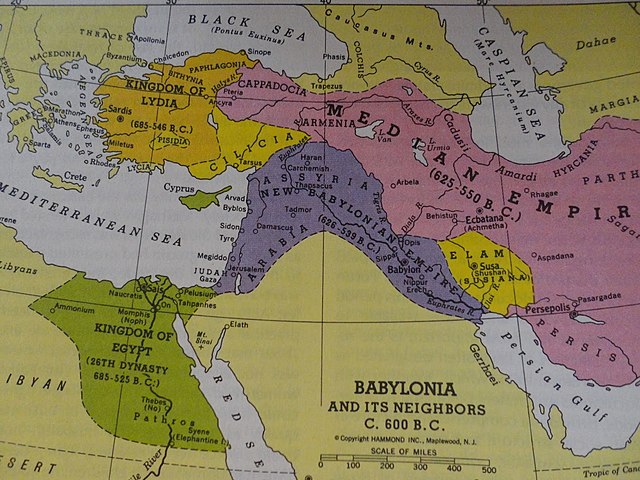Media was a political entity centered in Ecbatana that existed from the 7th century BCE until the mid-6th century BCE and is believed to have dominated a significant portion of the Iranian plateau, preceding the powerful Achaemenid Empire. The frequent interference of the Assyrians in the Zagros region led to the process of unifying the Median tribes. By 612 BCE, the Medes became strong enough to overthrow the declining Assyrian Empire in alliance with the Babylonians. However, contemporary scholarship tends to be skeptical about the existence of a united Median kingdom or state, at least for most of the 7th century BCE.
Scythian archers shooting with a composite bow, Kerch, Ukraine, 4th century BCE.
Ancient Near East in the 600s BCE
Achaemenid bas-relief from the 5th century BCE showing a Median soldier behind a Persian soldier
Artistic representation of noble Medes
Ecbatana was an ancient city and the capital of the Median Empire, making it the first capital of Iran. It later became the summer capital of the Achaemenid and Parthian Empires. It was also an important city during the Seleucid and Sasanian empires. It is believed that Ecbatana is located in the Zagros Mountains, the east of central Mesopotamia, on Hagmatana Hill. Ecbatana's strategic location and resources probably made it a popular site even before the 1st millennium BC. Along with Athens in Greece, Rome in Italy and Susa in Khuzestan, Ecbatana is one of the few ancient cities in the world that is still alive and important, representing the current-day Hamadan.
Ecbatana
Golden rhyton of ram's head, Median Empire, discovered in Ecbatana, kept at the Reza Abbasi Museum.
Achaemenid golden rhyton in the shape of a lion, from Ecbatana, kept at the National Museum of Iran.
Coin of Demetrius I, minted and discovered in Ecbatana.








